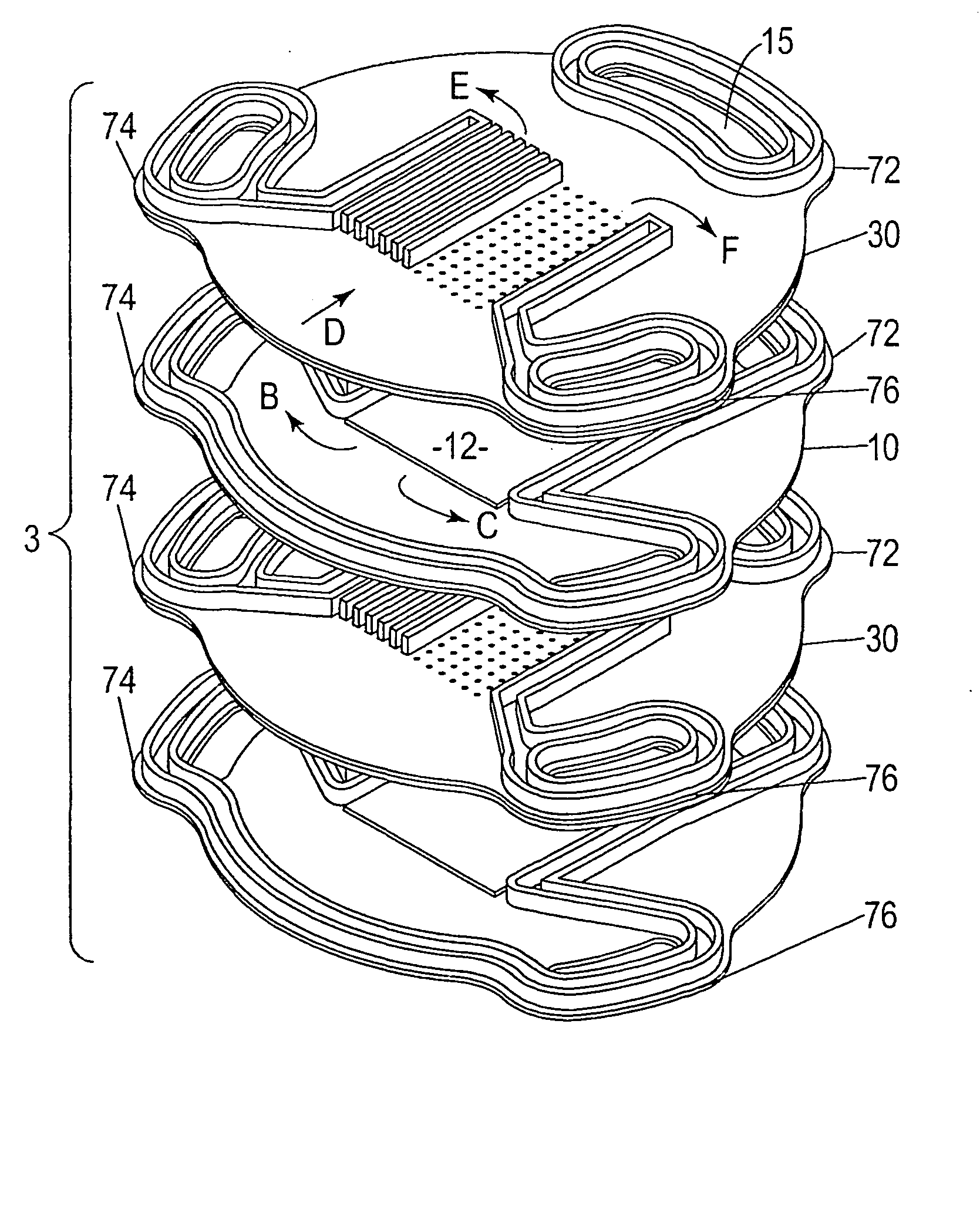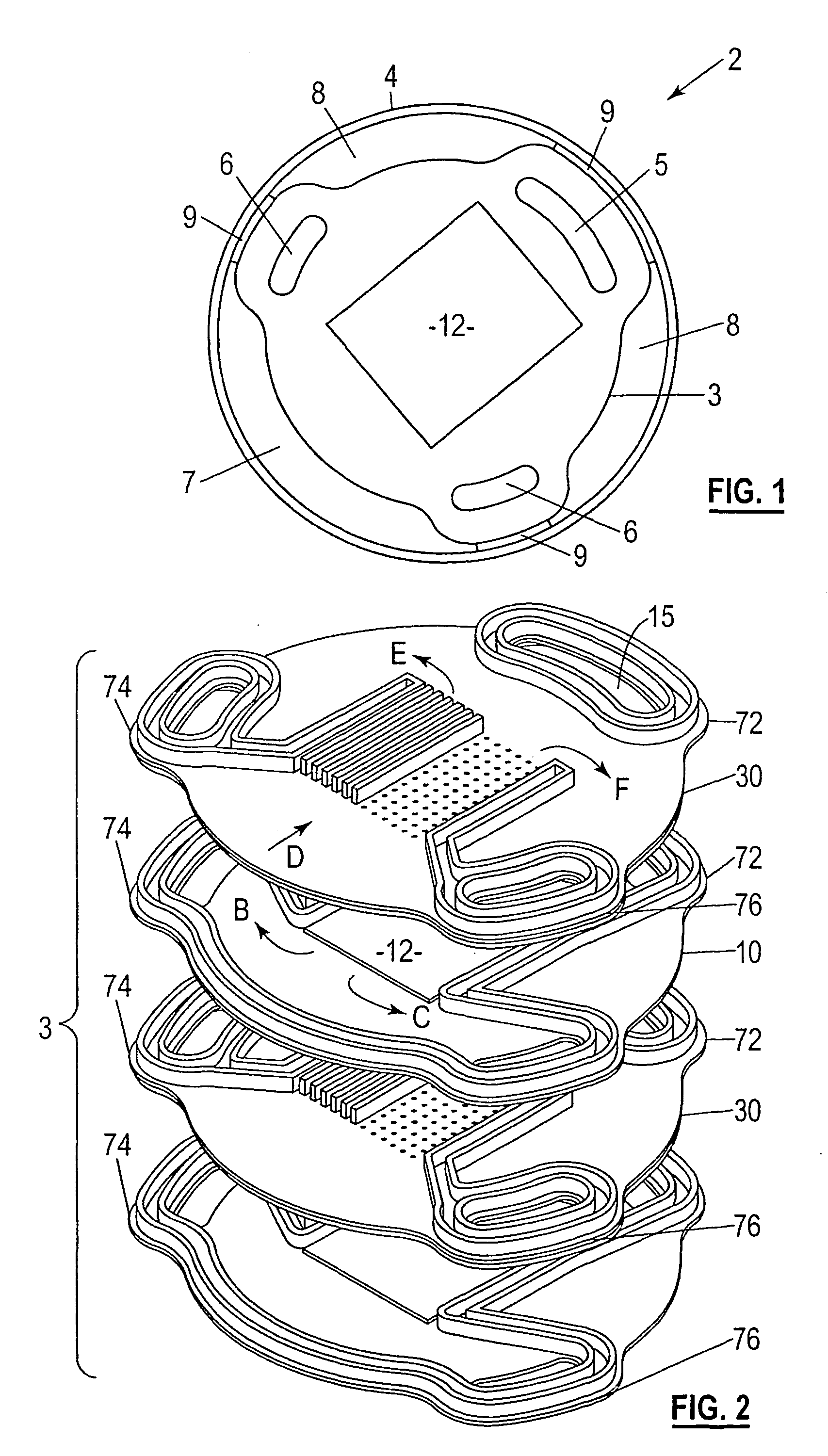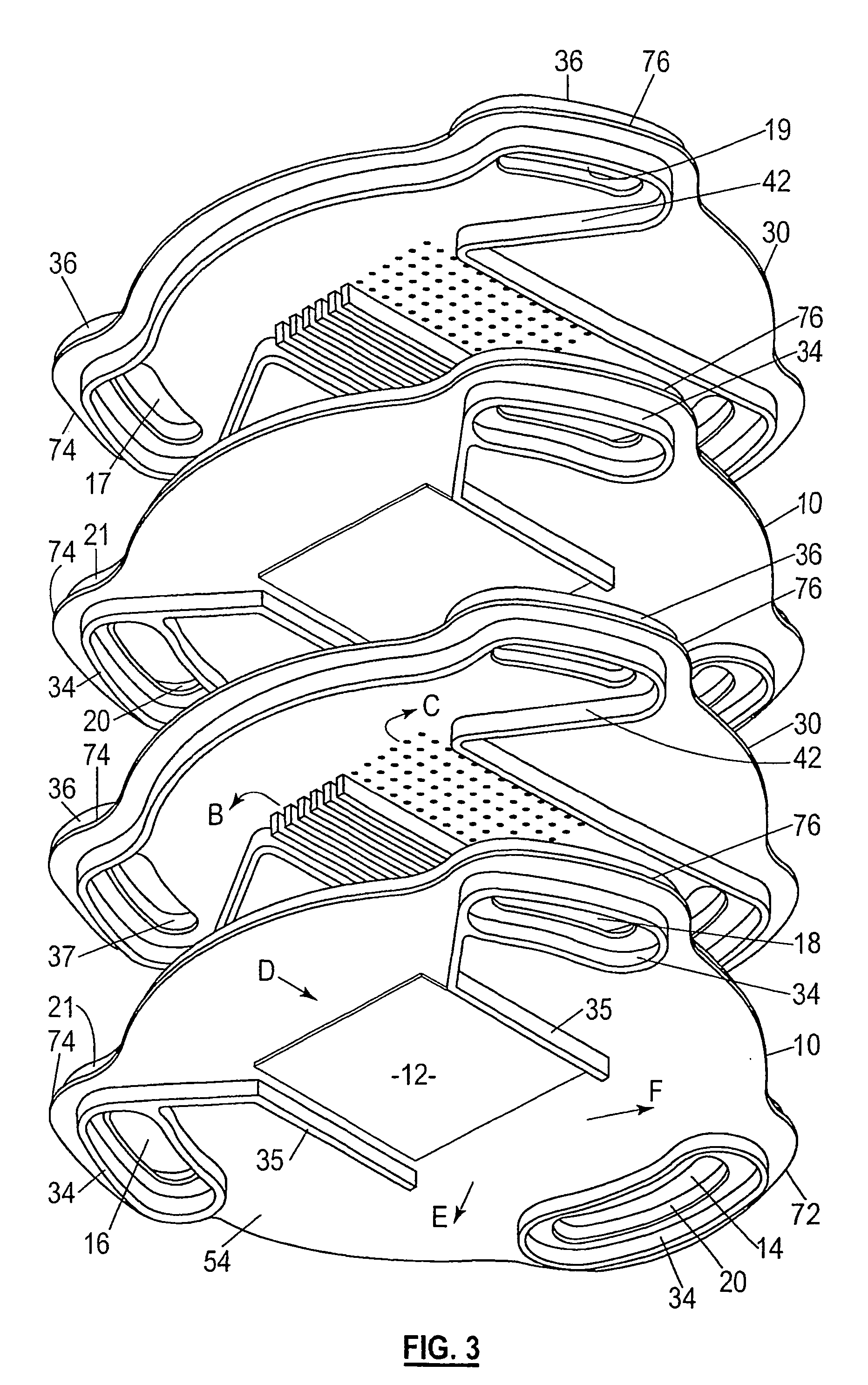Solid oxide fuel cell stack configuration
- Summary
- Abstract
- Description
- Claims
- Application Information
AI Technical Summary
Benefits of technology
Problems solved by technology
Method used
Image
Examples
Embodiment Construction
[0031] Referring to FIGS. 1, 2 and 3 a solid oxide fuel cell stack assembly 2 comprises a stack 3 of alternating fuel cell components, in the form of cell plates 10 and gas separator plates 30 held within a tubular housing 4. All of the cell plates 10 are identical and all of the separator plates 30 are identical. Typically there might be 20 to 500 of each of these plates in the stack 3. Fuel gas and air are supplied at one axial end of the stack assembly and exhaust gases are collected at the other end in a co-current manifolding system. Either end is suitable for the supply and exhaust functions, but the manifold system may alternatively be counter-current. In the described co-current embodiment, the fuel and air supplies are both at the bottom and the exhausts are at the top, but in many circumstances it is preferred for the fuel to be supplied from the bottom and the air to be supplied from the top in a counter-current arrangement. Alternatively, all of the gas supplies and exha...
PUM
 Login to View More
Login to View More Abstract
Description
Claims
Application Information
 Login to View More
Login to View More - R&D
- Intellectual Property
- Life Sciences
- Materials
- Tech Scout
- Unparalleled Data Quality
- Higher Quality Content
- 60% Fewer Hallucinations
Browse by: Latest US Patents, China's latest patents, Technical Efficacy Thesaurus, Application Domain, Technology Topic, Popular Technical Reports.
© 2025 PatSnap. All rights reserved.Legal|Privacy policy|Modern Slavery Act Transparency Statement|Sitemap|About US| Contact US: help@patsnap.com



